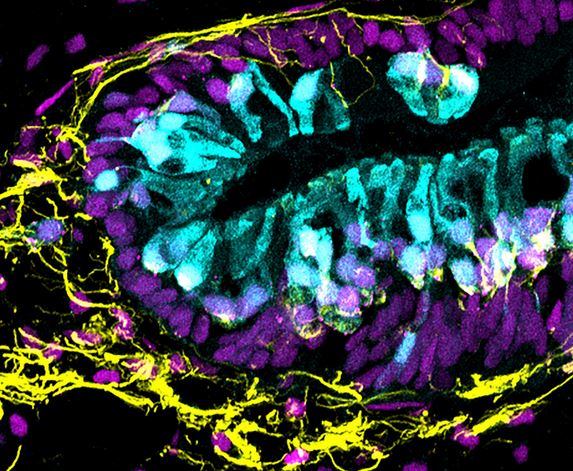In a study published on-line May 1, 2017, researchers at Indiana University School of Medicine announced they have successfully developed a method to grow inner ear tissue from human stem cells—a finding that could lead to new platforms to model disease and new therapies for the treatment of hearing and balance disorders.
The study, published in Nature Biotechnology, was led by Karl R. Koehler, PhD, assistant professor in the Department of Otolaryngology and Head and Neck Surgery at IU School of Medicine, and Dr. Hashino in collaboration with Jeffrey Holt, PhD, professor of otology and laryngology at Harvard Medical School and Boston Children’s Hospital. The research builds on the team’s previous work with a technique called three-dimensional culture, which involves incubating stem cells in a floating ball-shaped aggregate, unlike traditional cell culture in which cells grow in a flat layer on the surface of a culture dish. This allows for more complex interactions between cells, and creates an environment that is closer to what occurs in the body during development, Dr. Koehler said.
According to one of the researchers, Dr. Hashino, these findings are “a real game changer, because up until now, potential drugs or therapies have been tested on animal cells, which often behave differently from human cells.”
The researchers are currently using the human inner ear organoids to study how genes known to cause deafness interrupt normal development of the inner ear and plan to start the first-ever drug screening using human inner ear organoids.
By culturing human stem cells in this manner and treating them with specific signaling molecules, the investigators were able to guide cells through key processes involved in the development of the human inner ear. This resulted in what the scientists have termed inner ear “organoids,” or three-dimensional structures containing sensory cells and supporting cells found in the inner ear.

Human inner ear organoid with sensory hair cells (cyan) and sensory neurons (yellow). An antibody for the protein CTBP2 reveals cell nuclei as well as synapses between hair cells and neurons (magenta). Photo by Karl Koehler, courtesy IU
The researchers used CRISPR gene editing technology to engineer stem cells that produced fluorescently labeled inner ear sensory cells. Targeting the labeled cells for analysis, they revealed that their organoids contained a population of sensory cells that have the same functional signature as cells that detect gravity and motion in the human inner ear.
Reference:
Koehler, K. R., Nie, J., Longworth-Mills, E., Liu, X., Lee, J., Holt, J. R., & Hashino, E. (2017). Generation of inner ear organoids containing functional hair cells from human pluripotent stem cells. Nature Biotechnology. doi:10.1038/nbt.3840








Very interesting developments. The key will be to generate new synaptic targets.
I like this direction of research.
Jay.